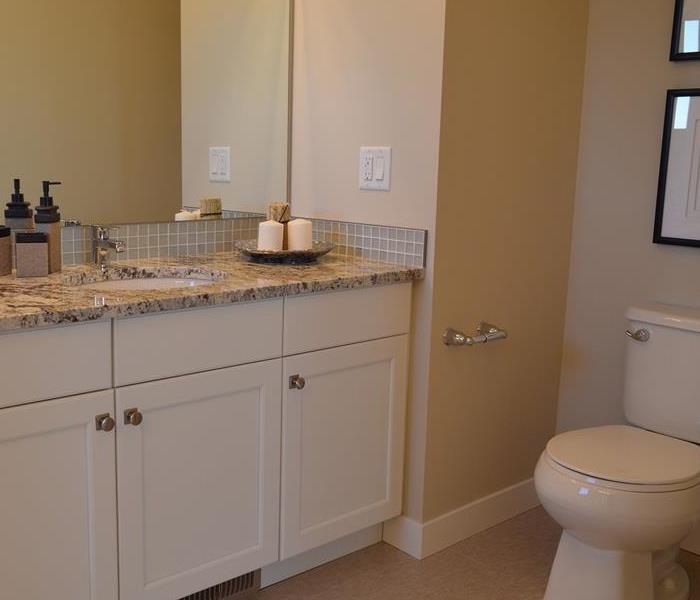Steps to Take When Your Bathroom Floods
4/2/2020 (Permalink)
 SERVPRO of Citrus Heights/Roseville and Carmichael can mitigate and restore damages from flooded bathrooms.
SERVPRO of Citrus Heights/Roseville and Carmichael can mitigate and restore damages from flooded bathrooms.
It’s always unfortunate when a bathroom floods. It’s uncomfortable, unsanitary, and all-around unpleasant. Not to mention, the damages that flooding causes are unforgiving!
The most frequent source of bathroom floods is overflowing toilets. Whenever a toilet overflows, it’s usually because of at least one of these common problems: backed up and congested drain pipes, water that’s running or leaking nonstop, or simply neglecting or not being careful with the plumbing system. Although It may seem really stressful when a bathroom floods, there’s no need to panic.
Follow these steps to minimize water damages from bathroom floods:
- Shut off the water supply at the closest valve possible.
This completely stops the water from running at the source. Valves can be found behind and/or below plumbing fixtures. Turning a valve off is similar to turning off a sink.
- Clean up as much water as you can.
Using a mop is often the most efficient way to clean up the excess water, so try mopping first. If there’s too much water for the mop to pick up, then gather as many towels necessary and soak up what you can. While cleaning up, do the best you can to keep the water inside of the bathroom and away from other areas of the house to minimize possible damage.
- Contact a plumber.
A plumber will figure out exactly what the cause of the overflow is, make the necessary repairs, and share insight on possible damages caused by the flooding.
- Contact your insurance company.
Explain to a representative of the current situation. Inform them of the plumber’s diagnosis and solution to the problem. File a claim with them if there are any damages.
- Contact a professional restoration company.
The restoration company will send a crew to the site and they will begin getting your bathroom back "Like it never even happened."




 24/7 Emergency Service
24/7 Emergency Service